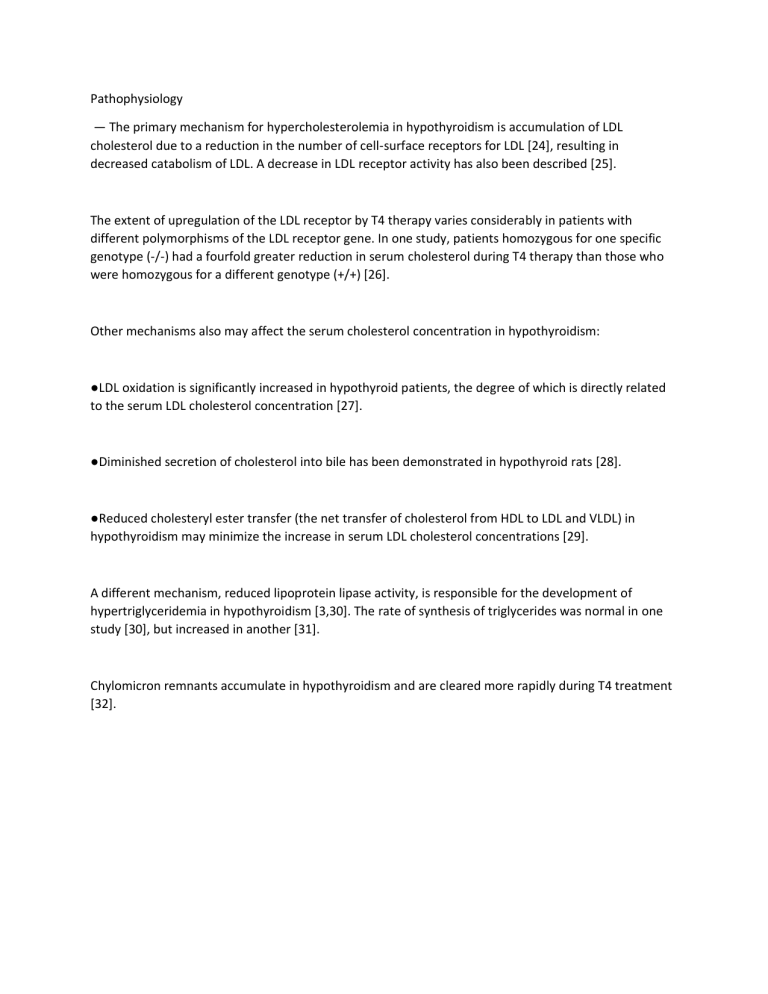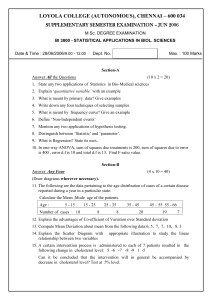
Pathophysiology — The primary mechanism for hypercholesterolemia in hypothyroidism is accumulation of LDL cholesterol due to a reduction in the number of cell-surface receptors for LDL [24], resulting in decreased catabolism of LDL. A decrease in LDL receptor activity has also been described [25]. The extent of upregulation of the LDL receptor by T4 therapy varies considerably in patients with different polymorphisms of the LDL receptor gene. In one study, patients homozygous for one specific genotype (-/-) had a fourfold greater reduction in serum cholesterol during T4 therapy than those who were homozygous for a different genotype (+/+) [26]. Other mechanisms also may affect the serum cholesterol concentration in hypothyroidism: ●LDL oxidation is significantly increased in hypothyroid patients, the degree of which is directly related to the serum LDL cholesterol concentration [27]. ●Diminished secretion of cholesterol into bile has been demonstrated in hypothyroid rats [28]. ●Reduced cholesteryl ester transfer (the net transfer of cholesterol from HDL to LDL and VLDL) in hypothyroidism may minimize the increase in serum LDL cholesterol concentrations [29]. A different mechanism, reduced lipoprotein lipase activity, is responsible for the development of hypertriglyceridemia in hypothyroidism [3,30]. The rate of synthesis of triglycerides was normal in one study [30], but increased in another [31]. Chylomicron remnants accumulate in hypothyroidism and are cleared more rapidly during T4 treatment [32].

